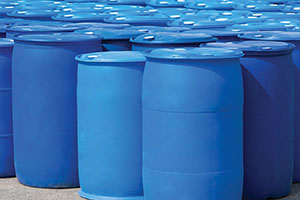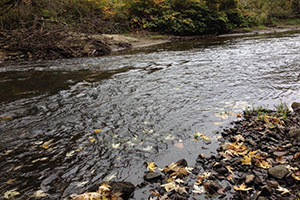Water is essential for human life, without it we will perish in an average of three days. It is also a resource that we not only require a lot of, but it takes a significant amount of space to store. With a gallon of water weighing over 8 pounds and humans requiring approximately a gallon a day, you can see how the weight adds up and the space required gets eaten up.
How much water do we need to store? How are we supposed to store enough water to sustain us throughout a SHTF situation? And which is the best method for water storage?
How Much Water Do We Need to Store?
The general rule of thumb is one gallon, per person, per day. This takes into account water required for washing and cooking in addition to what we need to drink.
What this means is that a three month supply for a family of four is going require 360 gallons of clean potable water, which will weigh almost 3000 pounds. Imagine what 360 milk jugs looks like, now try to imagine that many one gallon jugs stashed around your house. Below is a quick breakdown of what kind of volumes we are talking about.
Gallons Per Family of Four
3 days = 12 gallons approximately 100 pounds and 1.6 cubic feet
1 week = 28 gallons approximately 230 pounds and 3.74 cubic feet
1 month = 120 gallons approximately 1,000 pounds and 16.04 cubic feet
6 months = 730 gallons approximately 6,000 pounds and 97.59 cubic feet
1 year = 1460 gallons approximately 12,000 pounds 195.17 cubic feet
With this kind of space requirements efficiency is key.
Related: Does Water Really Expire?
How to Store Water for SHTF
There are several methods of storing water and the problem is that there is no one method that is best for everyone. The choice comes down to three factors, how much water you want to store, how much space you have available, and how much access to natural water sources you have.
Water Bottles
 It is easy enough to go to Costco and buy flats of water bottles for your water storage preps.
It is easy enough to go to Costco and buy flats of water bottles for your water storage preps.
This comes with two major problems, first is that flats of water bottles do not represent an efficient use of space, and the second is that the plastics in these bottles can leech into the water along with the bottles themselves degrading and becoming unstable.
They do have the advantage of being very easy to rotate since you can just use older bottles to drink from when you buy a new flat and in a bug out scenario water bottles are easier to grab and go than other methods.
You can also refill any old water, juice, or soda bottles with clean potable water as long as you take the time to clean and sanitize the bottles before filling.
Large Water Containers
 The sky is the limit as to what you can buy for your water storage but there is one old adage we should remember, ‘don’t put all your eggs in one basket’. Very large containers have three issues that need consideration.
The sky is the limit as to what you can buy for your water storage but there is one old adage we should remember, ‘don’t put all your eggs in one basket’. Very large containers have three issues that need consideration.
First, the larger they are the heavier they become when full and in turn can become impossible to move. A 55 gallon drum of water weighs 450 pounds. The second is that if all your water storage is in one container, if it gets contaminated or the vessel is ruptured, months of water could be instantaneously lost. The last is that they are not at all portable, so if you need to bug out you will be forced to leave a lot of water behind.
The major advantage is that you can purchase containers to suit your space and make full and efficient use of it. With options from 20 gallons to well over a thousand gallons you can find a size and shape that will suit your space.
Many of these containers and tanks can be stacked on top of each other which maximizes the use of space, much more so than flats of water bottles or one gallon jugs. There is also water tanks that are specifically designed to be stored outside in the elements.
Natural Sources
 This is a two pronged approach to your water storage. If you have a nearby water source you can use it as ‘grey water’ for washing, flushing toilets, etc. Using a natural water source for everything aside from food prep and drinking could effectively double the lifespan of your stockpile.
This is a two pronged approach to your water storage. If you have a nearby water source you can use it as ‘grey water’ for washing, flushing toilets, etc. Using a natural water source for everything aside from food prep and drinking could effectively double the lifespan of your stockpile.
You can also invest in a filtration system to filter the water making it safe to drink. This too has some issues, the first being that it is unwise to pin all of your water hopes and dreams on a filtration system that can break, second is that in SHTF the water may become unsuitable because it is compromised with chemicals, heavy metals, radiation or viruses.
Related: Building The Three Bucket Bio-Water-Filter
What Is The Verdict?
We all have different needs as far as prepping goes, and in planning our water storage we need to take our situation and what we are prepping for into careful consideration.
For example if you live in an apartment it would probably be easier and more efficient to store water in the form of water bottles. This allows for better use of the small spaces that apartments and condos have available and are easier to take with you during a bug out since sheltering in place inside an apartment or condo is not recommended.
If your plan is to bug in and you have a single family home or some property, purchasing specially made water tanks is a good option. In this case though it is still important to have a bug out plan when it comes to water. Since you are not going to be able to lift, let alone take any container more than 20 gallons, you need to have smaller containers ready to go for your bug out bags and vehicle.
Large storage options such as 55 gallon drums are probably the best option for most people looking to set up a long term water storage system. With a little DIY skills you can set up a rack to store them horizontally and stacked one on top of each other. 55 gallon drums are also good choices because each one is about 14 days of water for a family of four. This makes it easy to keep track of exactly how much water you have on hand and how much you have left in each drum when using them.
You may also like:
Is Harvesting Rain Water Illegal in Your State?
New Invention 12X More Efficient Than Solar Panels (Video)
How to Build a Water Purification System in 10 Minutes























water storage area of concern I see constantly is that “last minute” opportunity >>>
plenty of miscellaneous non-food containers like garbage cans that can be filled for some extra gray water …
there’s also food grade containers for potable water that store flat like Water Bobs and 5 gallon poly flex bags …
The space for water is definitely something to think about. Thanks for the article!
Yes, we have some bottled water usually 5 to 6 flats we get by hurricane season. When the season is over my wife drinks them and next season we do the same thing. I do not drink bottled water to concerned about chemicals.We also keep 6 of the blue 5 gallon jugs for water with stabilizer and rotate that water regular. We also have 10 55 gallon drums with water stabilized outside covered up. You can get food grade used drums for $20-25. That is a tremendous price reductions from those $100 plus ones they advertise for sale.We also are going to get 2-330 gallon water totes to run our down spouts in to.They sell those for $45 to 60.Way cheaper than those cistern water tanks. We also have several storage buildings around the property that the roofs can be used to capture water. Even if we just use it for grey water. Although filtering and boiling works also. People also can make home made filters to remove solids.
I’ve tried to find these totes for the price you’ve quoted. Where are you getting this information? Thanks.
I see them often on craigslist. Prices vary and you may not store drinking water in some of them, but water for other things is fine…unless you have a filter like Berkey.
Oh, by the way, we bought Lexington Container’s 30 gallon drums in 2011 for $10 each…what a steal!
The best way to store water is to live in a place with a water source (spring or well…we have both) you control along with the means to get it in your house.
If you’re living someplace that you depend on other people (like the water dept) to be willing, and able, to go to work to provide you with one of the basics of life, you’re clearly living in the wrong place.
Move.
where do I buy these various water containers?
You can google for food-grade plastic barrels
, Generally Juice and Juice concentrate. Smell great.hold 60 to 80 gallons.
Most people already have 30-40 gallons of water stored in their water heater. Don’t forget the stuff you already have.
If you drain your house water you can gain a gallon or two. The water in the tank of your toilets is okay to use for other uses other than drinking, although I would boil it before even washing clothes with it.
I have said it before and I will repeat it: In an end of the world situation, the amount of plasticizer dissolved in plastic water bottles is going to be the least of your worries. If you are really really really concerned about it because you are already suffering from being exposed to toxic organs-phosphates or heavy metal exposure, you can always boil it. The VOC temperature of the dissolved solids is less than the vapor pressure of boiling water.
I predict, however, that you will drink the water stored in plastic bottles and not give a single thought to the possibility of dissolved plasticizers in that water you will be so happy to have it to drink.
Watch out for those used large square plastic totes with the metal caging around them advertised as food grade. I investigated them a few years ago and even got the commercial content evaluations from the FDA. Even the “food grade” ones had a small cancer warning chance associated with them. Maybe they are different now but do your own investigating.
I have 14,000 gallons of usable water in my swimming pool while if not filtered wouldn’t be good for drinking but great for grey water uses. We have stored a couple hundred gallons in the garage that we rotate for drinking and cooking.